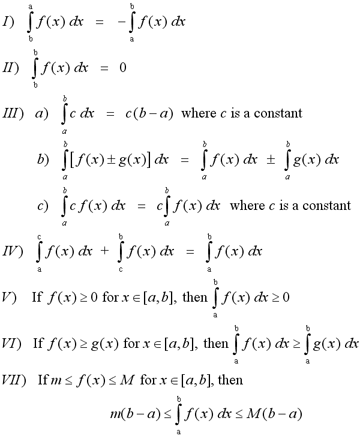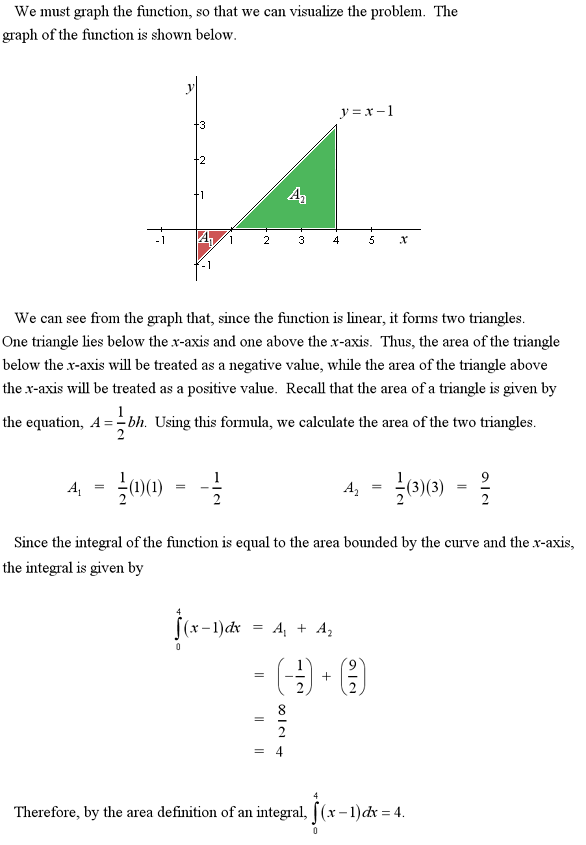The formal definition of a definite integral is stated in terms of the limit of a Riemann sum. Riemann sums are covered in the calculus lectures and in the textbook. For simplicity's sake, we will use a more informal definiton for a definite integral. We will introduce the definite integral defined in terms of area.
Let f(x) be a continuous function on the interval [a,b]. Consider the area bounded by the curve, the x-axis and the lines x=a and x=b. The area of the region that lies above the x-axis should be treated as a positive (+) value, while the area of the region that lies below the x-axis should be treated as a negative (-) value.
The image below illustrates this concept. The positive area, above the x-axis, is shaded green and labelled "+", while the negative area, below the x-axis, is shaded red and labelled "-".

The integral of the function f(x) from a to b is equal to the sum of the individual areas bounded by the function, the x-axis and the lines x=a and x=b. This integral is denoted by

where f(x) is called the integrand, a is the lower limit and b is the upper limit. This type of integral is called a definite integral. When evaluated, a definite integral results in a real number. It is independent of the choice of sample points (x, f(x)).
Properties of Definite Integrals
The following properties are helpful when calculating definite integrals.



댓글 없음:
댓글 쓰기